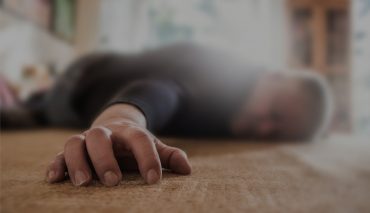The circumstances surrounding the murder of 28-year-old New Yorker, Kitty Genovese in Kew Gardens, Queens in 1964, spawned the idea of the Bystander Effect.
The social psychologists that coined the theory fed on the claim that 38 witnesses saw or heard the attack on Kitty Genovese yet did nothing. Their work suggested that individuals are less likely to help a victim when other people are present.
In his 2020 book Humankind: A Hopeful History, Dutch historian Rutger Bregman discusses at length the collected evidence showing the Bystander Effect could be completely wrong – and that in fact, the opposite may be true.
That meta-analysis suggests people are more willing to help in an emergency when there are more people around.
If this is true however, then why do so few people who experience an out-of-hospital cardiac arrest (OHCA) receive the critical help they need from bystanders, to survive?
Related article: Is anyone here a doctor? The folly of relying on others to step in.
There is plenty of evidence showing what makes people more willing to help, and the positive improvements their help delivers to a patient’s prospects of survival.
For example, it has been demonstrated that people whose families have experienced cardiac arrest in the past, are more likely to be ready and willing to “pay it forward” by helping the next sudden cardiac arrest victim they encounter.
We also know that the people most likely to survive an out-of-hospital cardiac arrest, received help from a bystander.
This study from China is a more recent example of the confidence to intervene that comes with familiarity with CPR. Conversely, lack of CPR familiarity makes someone far less confident.
A scoping study on willingness to perform bystander CPR commissioned by the International Liaison Committee on Resuscitation (ILCOR) drew a strong connection between CPR training and willingness to help – and vice versa.
This wasn’t the only reason why someone might be unwilling to assist, however.
For example, nearly one-third of non-responders reviewed in this study were unable to perform due to panic. Others shied away from assisting because the patient had vomited or was bleeding.
Even being female can be a problem; study data from Japan and Canada for example, showed bystanders were less willing to apply a public access defibrillator to a female patient, compared to male patients.
We have seen just how effective CPR training – and in particular, CPR training for school-aged children – can be at improving a territory’s out-of-hospital cardiac arrest survival rates.
As the ILCOR study concludes, improved CPR training will go a long way toward increasing willingness of bystanders to intervene.
It will also hopefully help to address other personal factors that may prevent even a CPR-trained bystander to step in – and if Rutger Bregman is correct, encourage others to follow suit.



